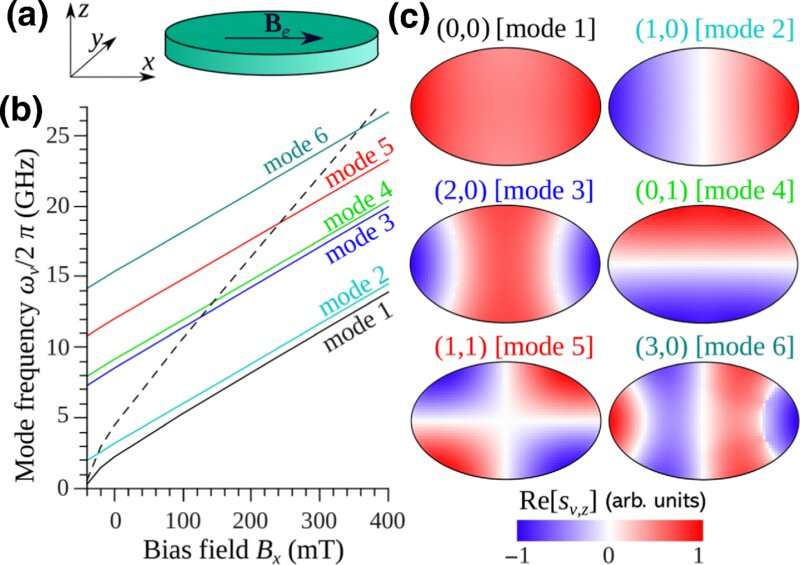This article has been reviewed according to Science X's editorial process and policies. Editors have highlighted the following attributes while ensuring the content's credibility:
fact-checked
trusted source
proofread
Researchers develop manual for engineering spin dynamics in nanomagnets

An international team of researchers at the University of California, Riverside, and the Institute of Magnetism in Kyiv, Ukraine, has developed a comprehensive manual for engineering spin dynamics in nanomagnets—an important step toward advancing spintronic and quantum-information technologies.
Despite their small size, nanomagnets—found in most spintronic applications—reveal rich dynamics of spin excitations, or "magnons," the quantum-mechanical units of spin fluctuations. Due to its nanoscale confinement, a nanomagnet can be considered to be a zero-dimensional system with a discrete magnon spectrum, similar to the spectrum of an atom.
"The magnons interact with each other, thus constituting nonlinear spin dynamics," said Igor Barsukov, an assistant professor of physics and astronomy at UC Riverside and a corresponding author on the study that appears in the journal Physical Review Applied. "Nonlinear spin dynamics is a major challenge and a major opportunity for improving the performance of spintronic technologies such as spin-torque memory, oscillators, and neuromorphic computing."
Barsukov explained that the interaction of magnons follows a set of rules—the selection rules. The researchers have now postulated these rules in terms of symmetries of magnetization configurations and magnon profiles.
The new work continues the efforts to tame nanomagnets for next-generation computation technologies. In a previous publication, the team demonstrated experimentally that symmetries can be used for engineering magnon interactions.
"We recognized the opportunity, but also noticed that much work needed to be done to understand and formulate the selection rules," Barsukov said.
According to the researchers, a comprehensive set of rules reveals the mechanisms behind the magnon interaction.
"It can be seen as a guide for spintronics labs for debugging and designing nanomagnet devices," said Arezoo Etesamirad, the first author of the paper who worked in the Barsukov lab and recently graduated with a doctoral degree in physics. "It lays the foundation for developing an experimental toolset for tunable magnetic neurons, switchable oscillators, energy-efficient memory, and quantum-magnonic and other next-generation nanomagnetic applications."
Barsukov and Etesamirad were joined in the research by Rodolfo Rodriguez of UCR; and Julia Kharlan and Roman Verba of the Institute of Magnetism in Kyiv, Ukraine.
More information: Arezoo Etesamirad et al, Controlling Selection Rules for Magnon Scattering in Nanomagnets by Spatial Symmetry Breaking, Physical Review Applied (2023). DOI: 10.1103/PhysRevApplied.19.044087
Provided by University of California - Riverside





















